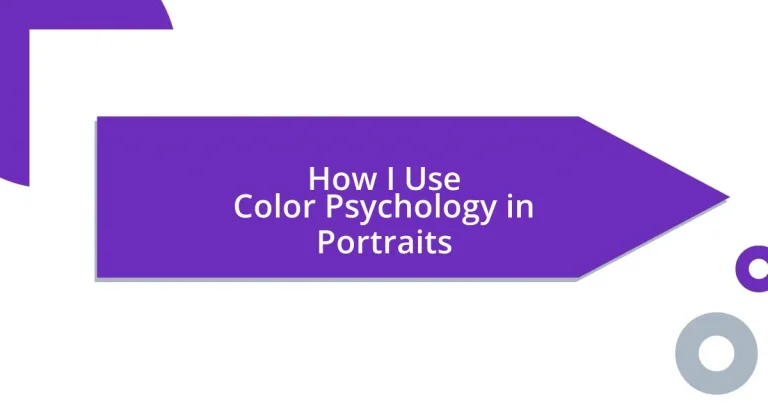Key takeaways:
- Color psychology significantly influences emotions and perceptions in portraiture, with different colors evoking distinct feelings (e.g., warmth from reds, calmness from pastels).
- Choosing color palettes thoughtfully based on the subject’s personality can enhance the emotional narrative of the portrait.
- Techniques such as layering, color blocking, and experimenting with color combinations can amplify emotional expression and viewer engagement.
- Analyzing portrait outcomes and viewer feedback reveals the complex interplay between color choices and emotional responses, deepening the artist’s understanding of their impact.
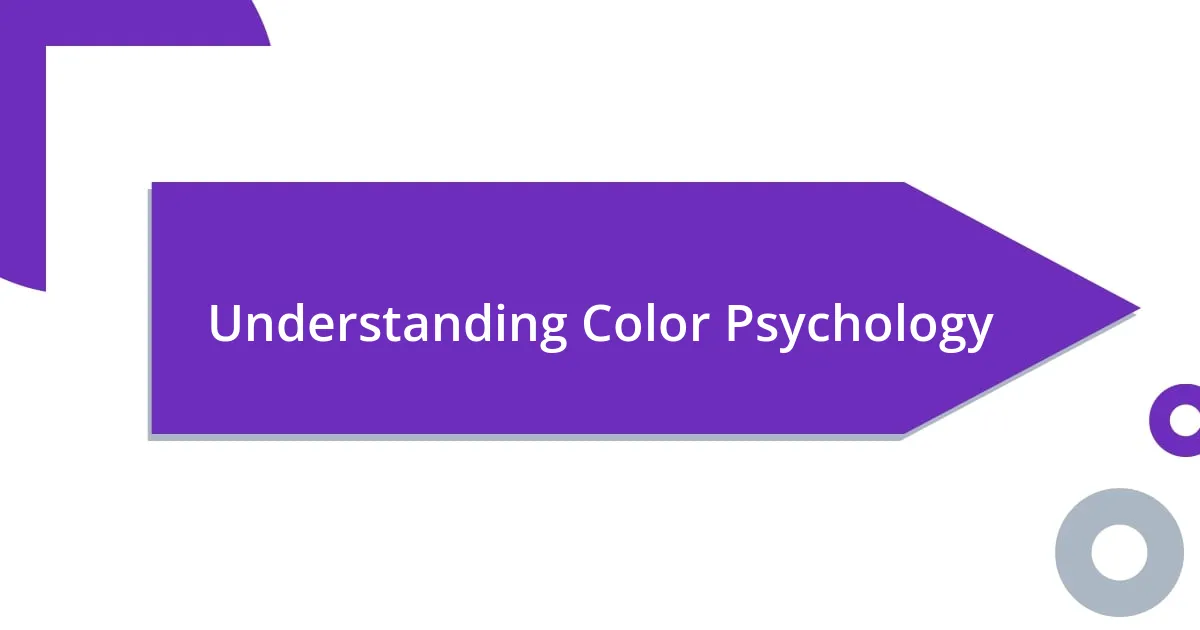
Understanding Color Psychology
Color psychology is a fascinating field that dives deep into how colors influence our emotions and perceptions. For example, when I use warm colors like reds and oranges in a portrait, it often evokes feelings of warmth and passion. Have you ever noticed how a simple shift to cooler colors like blues or greens can completely alter the mood of a piece?
I remember experimenting with different palettes during a recent portrait session. I used soft pastels for one subject who exuded calmness, and the final image radiated tranquility and peace. Seeing how my choice of color affected not only my subject but also those who viewed the portrait made me appreciate the powerful language of color.
Additionally, I often reflect on how certain colors resonate with my own experiences. For instance, yellow brings to mind joy and optimism in my life, so I tend to incorporate it in portraits when I want to convey happiness. Have you ever felt drawn to a specific color that resonates with your memories? Understanding the psychological impact of colors enables us to create artworks that not only look good but also feel deeply connected to the emotions we want to express.
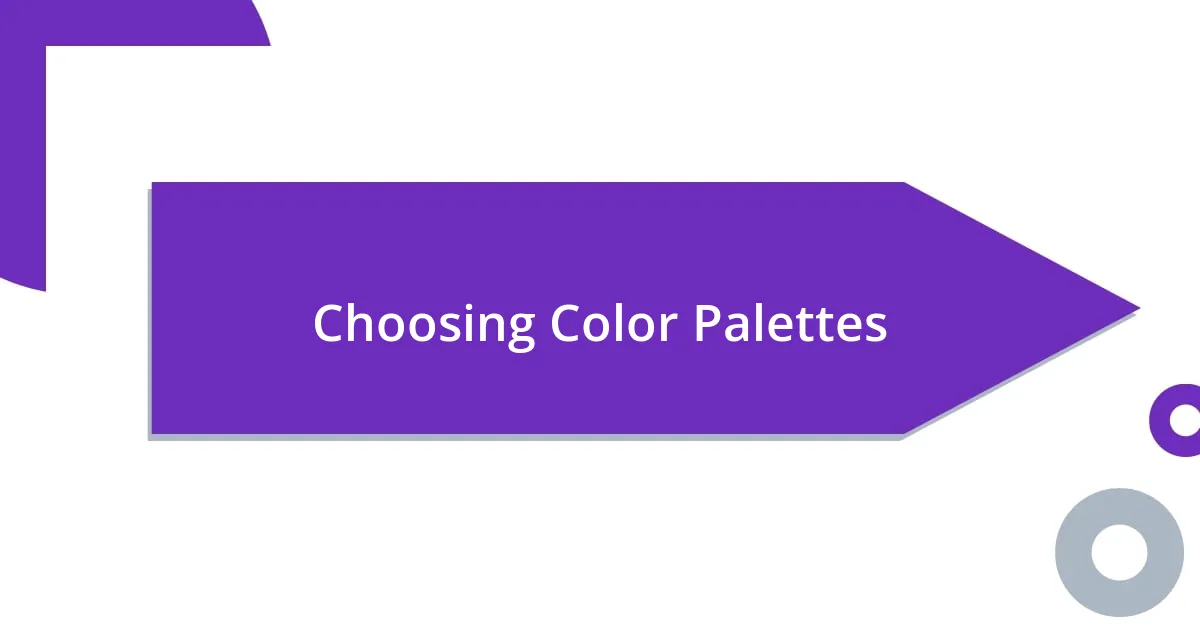
Choosing Color Palettes
Choosing the right color palette for a portrait is like selecting the perfect melody for a song; it sets the tone and evokes specific emotions. I often start by considering the subject’s personality and the message I want to deliver. For instance, if I’m capturing someone with a vibrant spirit, I lean towards bold, saturated colors that reflect their energy.
In a recent project, I had a client who was drawn to earthy tones, which inspired me to create a palette combining deep greens and rich browns. The final result was striking; the colors complemented their features beautifully and projected a sense of groundedness and authenticity. This experience reinforced my belief that color choice can deepen the narrative of a portrait.
While it’s essential to consider emotional impact, I also enjoy playing with complementary colors to create visual balance. I love using the color wheel to guide my selections, often mixing warm and cool tones for contrast. This not only enhances the overall aesthetic but also invites viewers to engage more deeply with the piece—making them pause and feel, rather than just glance and forget.
| Color Emotion | Color Examples |
|---|---|
| Warmth and Passion | Reds, Oranges |
| Calmness and Peace | Soft Pastels |
| Joy and Optimism | Yellows |
| Groundedness | Deep Greens, Rich Browns |
| Visual Contrast | Warm and Cool Colors |
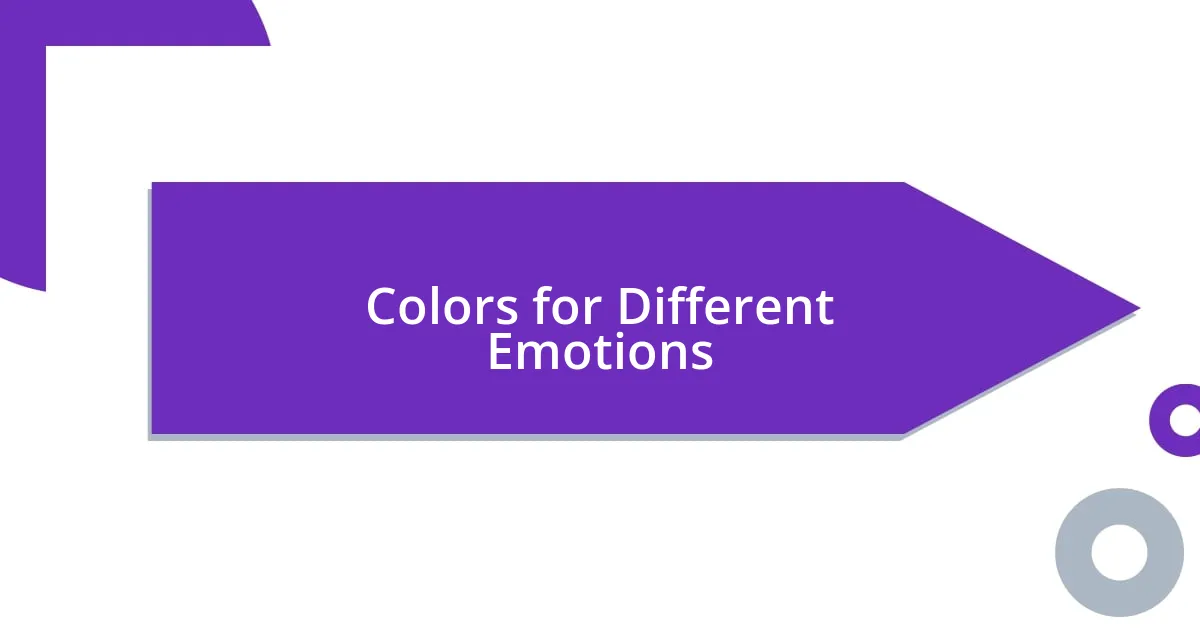
Colors for Different Emotions
Using color to evoke specific emotions in portraits is something I’ve grown increasingly passionate about. For example, in one memorable shoot with a client going through a challenging time, I opted for muted shades of blue to portray their feelings of sadness. The resulting portrait seemed to encapsulate their emotional journey, resonating deeply with anyone who viewed it. It’s intriguing to think about how colors can act as a mirror to our emotions.
Here’s a closer look at how various colors convey distinct feelings:
- Blues: Convey sadness, tranquility, and introspection.
- Reds: Evoke passion, love, and sometimes aggression.
- Yellows: Reflect joy, optimism, and energy.
- Greens: Symbolize growth, harmony, and stability.
- Purples: Imply creativity, luxury, and sometimes mystery.
I once painted a portrait using vibrant oranges and yellows for a friend who had just accomplished a significant life goal. Their face lit up with excitement and pride in the final image, and you could genuinely feel their energy leap off the canvas. This experience truly reinforced my belief that attention to color can amplify emotional narratives, making the portrait tell a richer story.
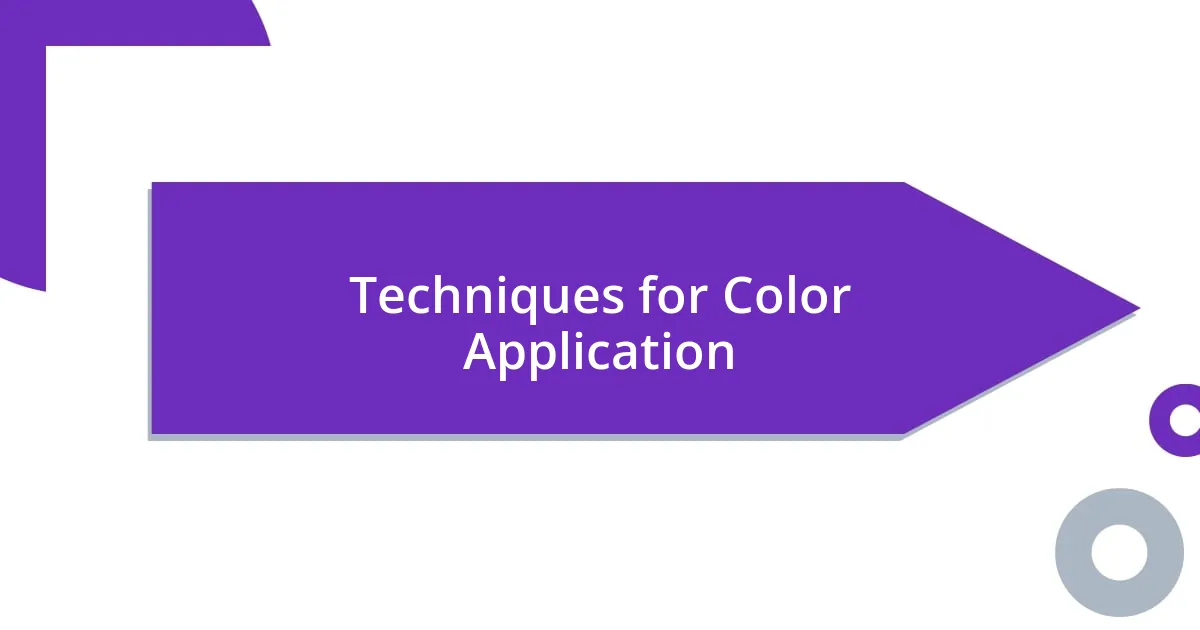
Techniques for Color Application
Techniques for applying color in portraits require a thoughtful approach. One technique I often employ is layering color washes. This process involves applying thin layers of transparent paint to build depth, which can evoke different emotional undercurrents. I remember a portrait of a musician where I used a deep indigo wash as a base, allowing the vibrant hues of the foreground to pop. The result was a captivating contrast that perfectly expressed the subject’s complex emotional landscape.
Another approach I find useful is the strategic use of color blocking. This technique entails creating distinct sections of color to guide the viewer’s eye. For instance, in a recent portrait of a dancer, I blocked out large areas of pink and orange, framing her in a halo of warmth. The simplicity of color blocking not only highlighted her movement but also radiated joy and passion. I often wonder how such deliberate choices can transform a simple composition into an emotionally charged piece.
Additionally, I like experimenting with temperature shifts in color to enhance mood. By juxtaposing warm and cool hues, I can create a dynamic balance that invites viewers to explore the emotional layers of the portrait. For example, in a portrait centered around friendship, I incorporated cooler shades on one side and warmer tones on the other, representing the complexities of their relationship. Engaging with color this way brings a new dimension to my work, prompting me to ask: how do subtle shifts in hue influence our perception of intimacy and connection?
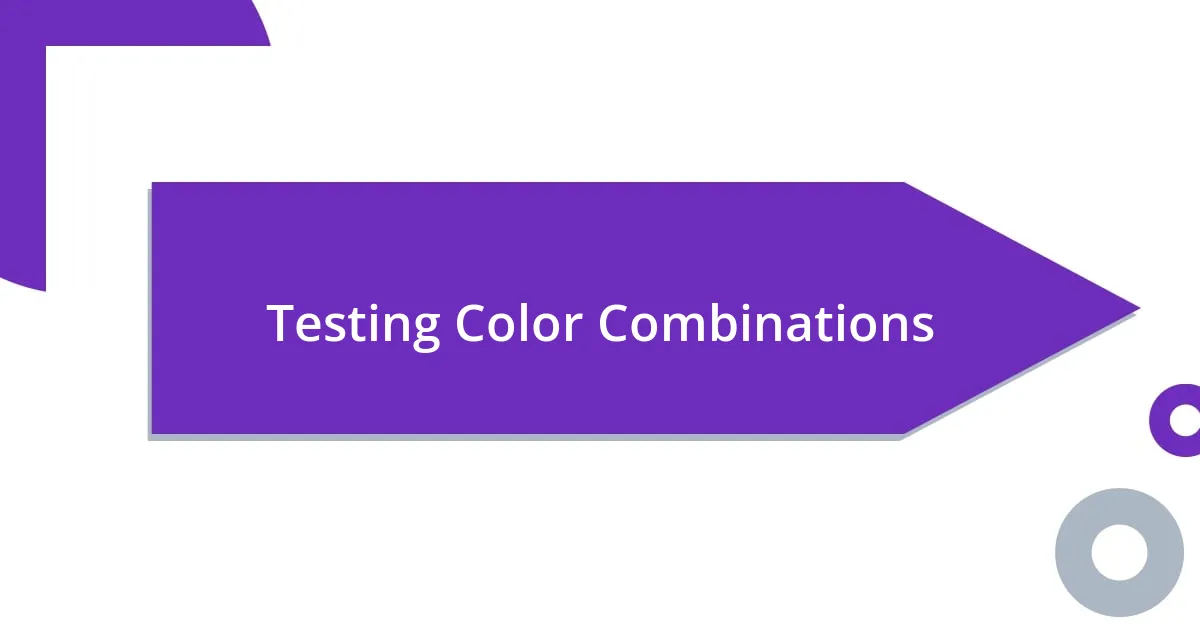
Testing Color Combinations
Testing color combinations is a crucial step in my creative process. I often start by creating small sketches using various swatches to see how different colors interact. For instance, during a recent project, I experimented with combining vibrant turquoise and soft peach, only to discover how they beautifully complemented each other, inviting a sense of warmth and liveliness that I hadn’t initially anticipated.
When testing these combinations, I pay attention to the emotional responses they elicit. I remember a time when I paired deep maroon with pale gold for a portrait inspired by ancient mythology. The contrast not only captivated the eye but also stirred feelings of elegance and mystery. This taught me that, sometimes, unexpected pairs can yield the most striking emotional resonance—have you ever found yourself surprised by how certain colors can change the entire mood of a piece?
I also encourage experimentation outside of the familiar. Sometimes, I’ll mix colors directly on the canvas and let the paint run freely, observing which combinations spark my interest in the moment. For example, I physically drizzled a metallic silver over a sea of bright red during one session, leading to a dynamic visual effect that mirrored energy and excitement. This spontaneous approach often reveals delightful surprises that structured tests might miss, making the creative journey even more rewarding.
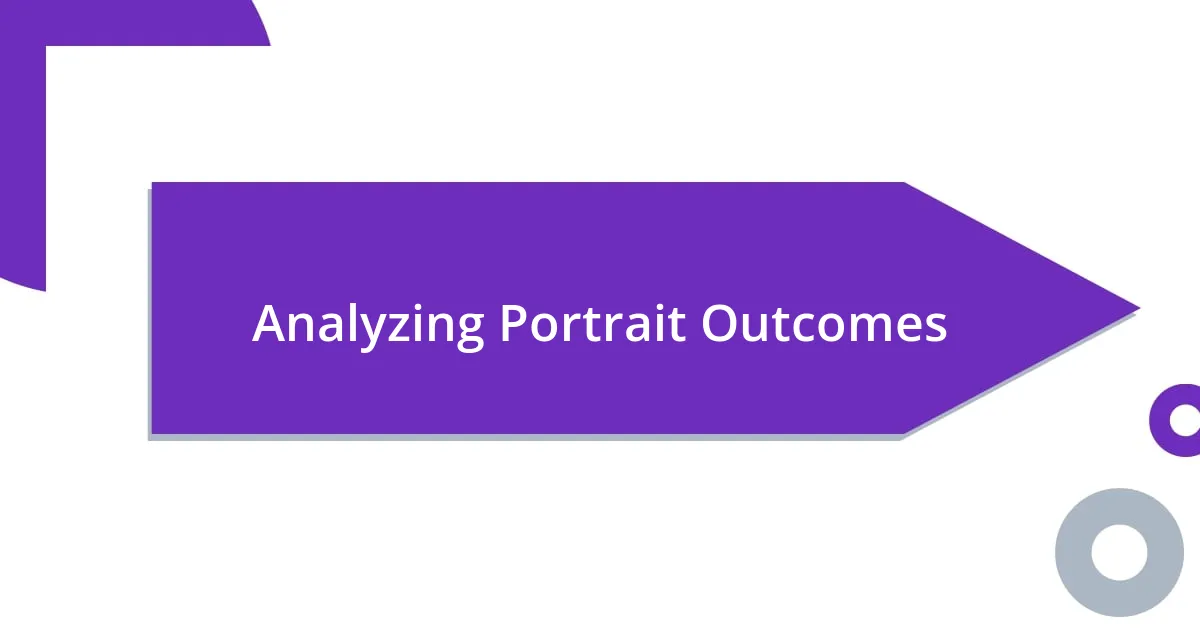
Analyzing Portrait Outcomes
Evaluating the outcomes of my portraits is always an eye-opening process. I remember one particular piece where I chose subdued earth tones, thinking they would convey serenity. However, upon finishing, I realized the overall mood felt heavier than intended, creating a somber atmosphere. It made me ask: how does each color choice ripple through the entire emotional experience of the viewer?
Artwork often surprises me with its narrative potential, showcasing the relationship between color and emotion. Take, for example, a portrait I created using a vibrant yellow background. Initially, I was apprehensive about its brightness, but it ended up instilling a sense of joy and optimism that perfectly matched the spirit of my subject. It’s moments like this that reinforce my belief that color can significantly elevate the storytelling aspect of a portrait, transforming the viewer’s engagement with the piece.
Sometimes, I think about the feedback I receive and how it influences my understanding of color’s impact. Recently, after unveiling a portrait with contrasting cool and warm colors, a viewer mentioned how it mirrored their internal conflict, which was a perspective I hadn’t considered. This taught me that analyzing the outcomes of my color choices isn’t just about seeing; it’s about listening to how others perceive and connect to my work. Have you ever felt a disconnect between your intention and how others interpret your creations? It’s such a fascinating journey of discovery.
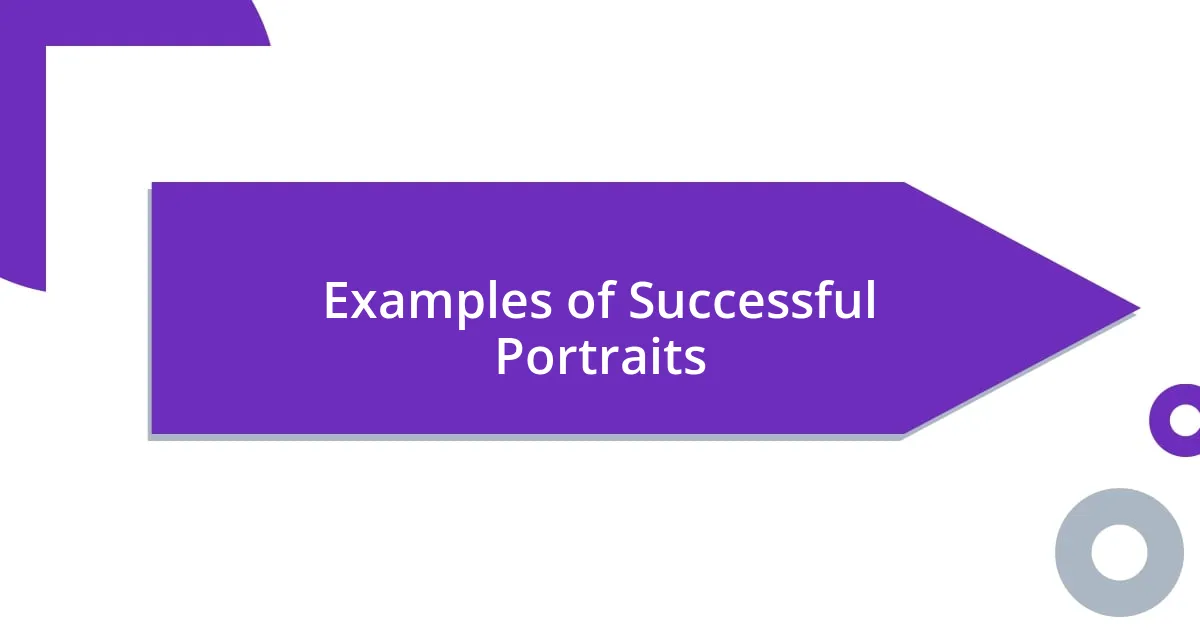
Examples of Successful Portraits
One striking example that comes to mind is a portrait I created of a child with wildflowers in her hair against a soft lavender background. The interplay of bright greens and yellows of the flowers created a sense of playfulness and innocence, capturing the essence of childhood beautifully. I still remember the delight in her eyes when she saw herself transformed into a fairy, which reaffirmed my belief that color can shape not just images, but identities.
I once painted a series of portraits featuring individuals from diverse backgrounds, each set against a backdrop that reflected their culture. For one subject, I chose rich, royal blue paired with vibrant orange, which echoed the cultural significance of those colors in her heritage. The combination was not only visually striking but also created a powerful narrative that honored her story. Isn’t it amazing how color can act as a bridge, connecting us to personal histories and emotions?
A favorite project was a moody self-portrait where I enveloped myself in deep indigos and blacks, which conveyed introspection and depth. However, as I added splashes of bright gold, the painting transformed, radiating hope and resilience. It was a revealing moment—how often do we underestimate the shift that one color can bring to our emotional landscape? I found myself reflecting on the delicate balance between darkness and light in our lives and how portraits can encapsulate that complex duality.












